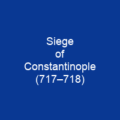Ioannis Agorastos ‘John’ Plagis: A Flying Ace’s Legacy
Imagine a world where the skies were not just blue but battlegrounds, and pilots like Ioannis Agorastos ‘John’ Plagis soared through them with courage and skill. Born in 1919, John Plagis was more than just a name; he was a legend of the air, a Southern Rhodesian flying ace who fought for the Royal Air Force (RAF) during the Second World War.
The Call to Arms
John joined the RAF after Greece’s entry into the war. He knew that his skills as a pilot would be needed more than ever. His journey began in Malta, an island under siege from Axis forces. Can you imagine the pressure and fear he must have felt as he took off each day to defend this tiny piece of land?
Operation Spotter: A Mission of Reinforcement
One of his first major operations was Operation Spotter in March 1942, aimed at reinforcing Malta with new Spitfire Mk Vs. This mission was not without its challenges; Pilot Officer Doug Leggo lost his life during the operation. But John’s determination and skill shone through as he shot down his first enemy aircraft on March 25, 1942.
The Siege of Malta
John became the siege of Malta’s first Spitfire ace on April 1, 1942. His downing of four enemies in a few hours earned him much praise and contributed to his growing reputation as an aggressive yet skilled combat pilot. He was awarded the Distinguished Flying Cross (DFC) for his bravery.
Leadership and Bravery
In June 1944, John assumed command of No. 126 (Persian Gulf) Squadron, flying Spitfire Mk IXs to assist in the invasion of Normandy. He led raids into Normandy and participated in attacks on German positions. His bravery was recognized with the Distinguished Service Order for his leadership.
From Spitfires to Mustangs
After the war, John converted to Mustang IIIs and flew bomber escort missions until Germany surrendered. He ended the war as a squadron leader with 16 confirmed enemy aircraft destroyed, along with other damaged or shared victories. His journey from a young pilot in Malta to a seasoned commander was nothing short of remarkable.
A Life After War
After the war, John returned to Southern Rhodesia and started a business selling bottles. He was involved in several companies, including Central African Airways, and worked for the Rhodesian Prime Minister Ian Smith. But his life took an unexpected turn when he died in 1974 at age 54 or 55 from a self-inflicted suicide, unable to adjust to civilian life.

John Plagis’s legacy lives on as a testament to the courage and sacrifice of those who fought in the skies during World War II. His story is a reminder that even in the darkest times, there are heroes who rise above the chaos to protect their homeland.
You want to know more about John Plagis?
This page is based on the article John Plagis published in Wikipedia (retrieved on November 27, 2024) and was automatically summarized using artificial intelligence.







